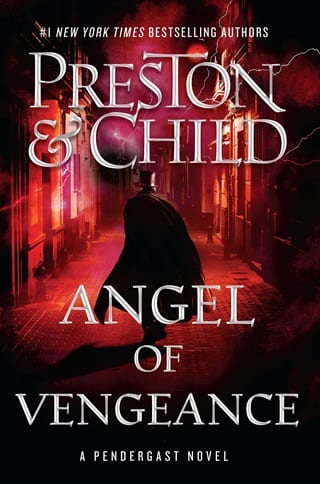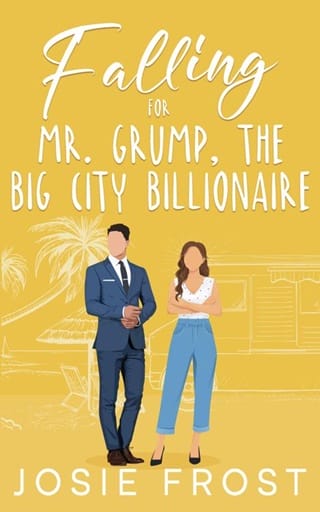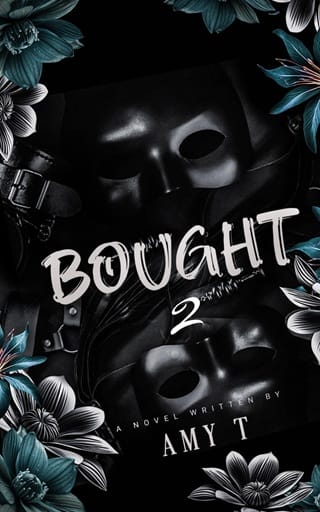59
59
D IOGENES MOVED THROUGH THE fretted shade of the alleyway, pushing workmen and guards aside as he ran, until he burst out onto Forty-Second Street. Tossing his monocle to the ground, he spotted his carriage and waved. His driver, Cato, seeing him, briskly moved the carriage forward.
Diogenes leapt onto the running board and signaled directions. Cato nodded and cracked his whip, and the cab shot out into the bustling traffic. Diogenes swung himself inside, closed the door, and sat back, removing the lace-edged gloves and other frippery encumbering his clothing as Cato navigated the broad avenue.
His coach, despite being tastefully appointed within and without, might have been looked at derisively by much of the beau monde: small, driven by a single horse, and in general resembling a hansom cab. In fact, it was an English hansom cab, chosen by Diogenes because its low-slung profile and center of gravity allowed it to take corners at speed. With a single horse at the reins, it could cut in and out of traffic when necessary, easily overtaking larger and more ponderous vehicles.
At that very moment, in fact, Cato was demonstrating the cab's agility by turning north on Broadway at—Diogenes estimated—nearly fifteen miles an hour.
He had already added luxurious touches to the cab while replacing needless weight with lighter, stronger materials. He had ordered the springs and wheels altered according to certain laws of mechanics and gravity that, in 1881, remained undiscovered. Even more important had been his choice of driver. He'd visited the Belmont Stakes at Jerome Park, but decided Thoroughbred jockeys were not what he was looking for. Instead, he'd found his man at Coney Island Racetrack in Brighton Beach: a harness racer who had won a large number of trotting competitions. It turned out Cato was ready to trade in his "sulky" for a professional cab, especially for the money Diogenes was willing to pay.
It was precisely this moment for which Diogenes had hired Cato.
The cab was jostled as another, larger carriage tried to pull away from the curb and elbow into the throng; Cato, with the instinctive training of a harness jockey, made a quick double feint that sent the driver of the other vehicle into a terrified halt, horses neighing and rearing as their reins became entangled.
Some distance ahead, in the fading light of approaching evening, Diogenes could see their destination: the Grand Circle where Broadway met the southwest corner of Central Park.
Not only, Diogenes mused, was Cato the best possible cabman, but childhood meningitis had rendered him deaf and mute. This proved no difficulty to Diogenes, who was fluent enough in American Sign Language; if anything, it was a benefit. Cato was a man with a remarkably even keel: nothing he had witnessed while in the employ of Diogenes seemed to have excited his deadpan nature.
Cato had one other advantage: his superb knowledge of horses allowed him to control the kind of animal whose speed and stamina were usually found on the track, not the boulevard. Cato himself had found the horse for Diogenes: Bad Influence, an American standardbred of tremendous strength who, it seemed, relished being free of the racecourse. Pulling ahead of the surrounding carriages, they caromed around ninety degrees of the Grand Circle, then cut nimbly across traffic and made a U-turn, slowing and pulling to the curb directly in front of the unfinished observation tower.
Diogenes pulled out his pocket watch: ten minutes to five. Grabbing a box of matches from one of the inlaid drawers of the cab's interior, he opened the door and jumped nimbly to the street. Cato , he explained in ASL, create a brief diversion . Then he darted into the park while, from behind, he could hear Bad Influence already beginning to whinny and rear.
No one was looking his way as he slipped into the construction zone and then the tower itself. He fumbled for a lantern, lit it, placed it on the floor, then looked around to ensure nothing had changed since his last visit. All was as before; no further work had been done.
He went to the far side of the dark space, pushed aside some crates and scaffolding, and then—more gently—rolled back a large tarp and placed it in a corner. Beneath was a double strand of jute, wound very tightly with fine gunpowder dust and then dipped in tar: the main, arterial fuse.
He had set four charges in the tower, the primary at the top and three secondaries at intervals below it. He'd also altered the safety casing of the fuse so it would burn at five seconds per foot instead of the usual thirty. If he'd calculated properly, once he lit this main fuse, it would make its way up the stairs, lighting the three secondary fuses in turn as it reached them. The higher up the load of dynamite, the shorter he'd made the secondary fuses—this way, the primary charge beneath the roof would go off first, followed in succession by those below it.
Diogenes had found amusement in explosives from an early age: placing squibs on the underside of a trash can lid; in a bed of roses; in a dog's chew toy. Rather extreme measures had been taken to snuff out this childish pastime, and it had been years since Diogenes had toyed with, or even thought about, gunpowder. But now, watching the thick fuse take on a life of its own under his match—and the flame begin crawling its way up the stairway, leaving nothing but a wisp of smoke in its wake—he felt once again a boyish quickening of the heart.
The angry cigarette end of flame vanished up the curve of the stairwell, and Diogenes took his leave. He blew out the lantern and passed through the construction debris to the curb. The lamplighters were moving along the streets, heralding night's advance. His cab was now parked on the far side of the circle, Cato holding Bad Influence calmly by the bridle.
Looking out for traffic, he made his way across Central Park South, and then west to the far side of Broadway. Diogenes was about to warn the ex-jockey to cover his ears, then remembered it wasn't necessary. And so instead he gestured for Cato to keep the horse calm. They both put reassuring hands on the animal's neck, and Diogenes turned toward the tower to make sure he didn't miss the show.
 Fullepub
Fullepub 



